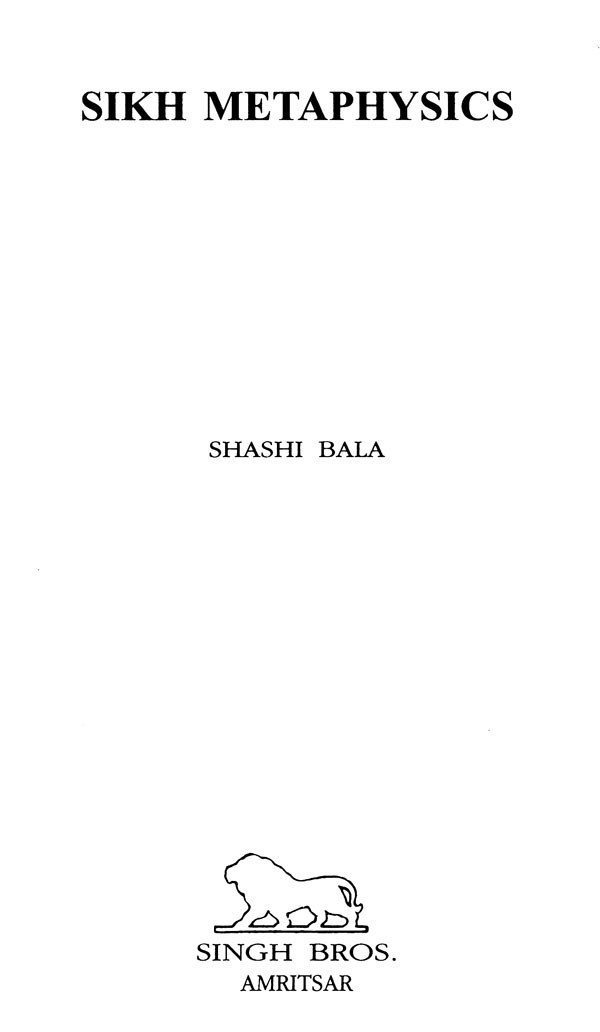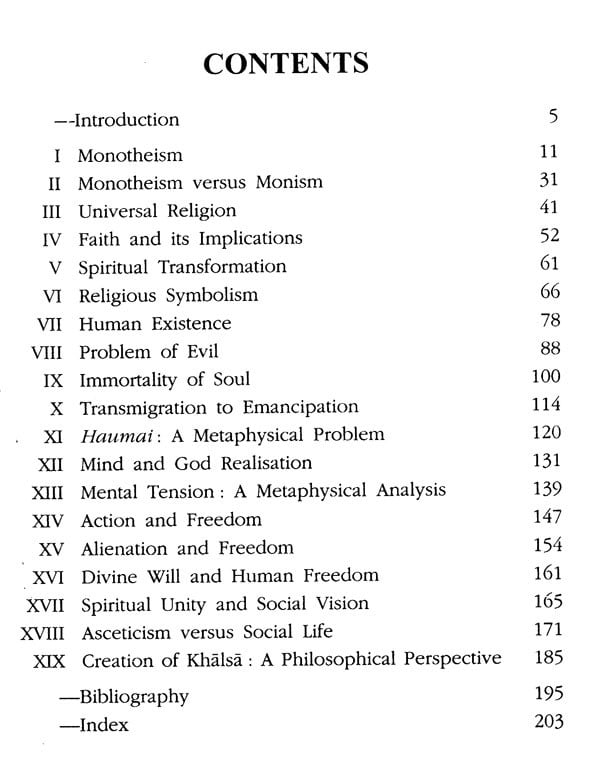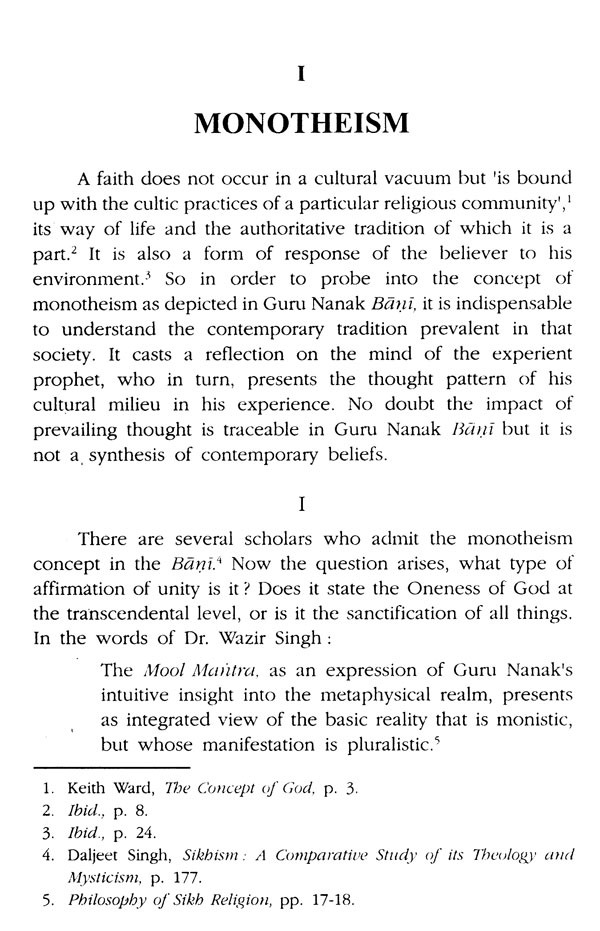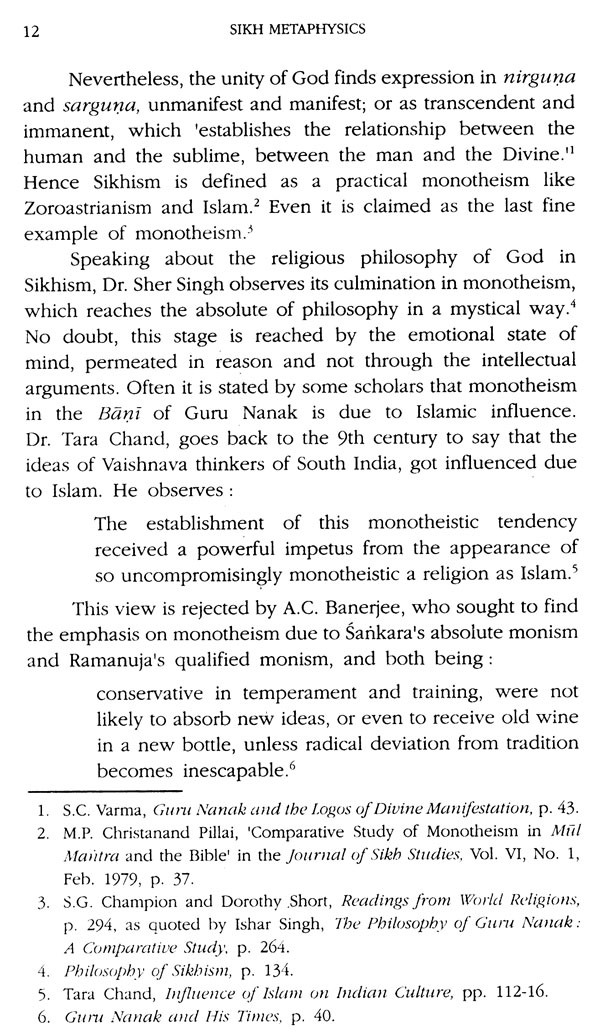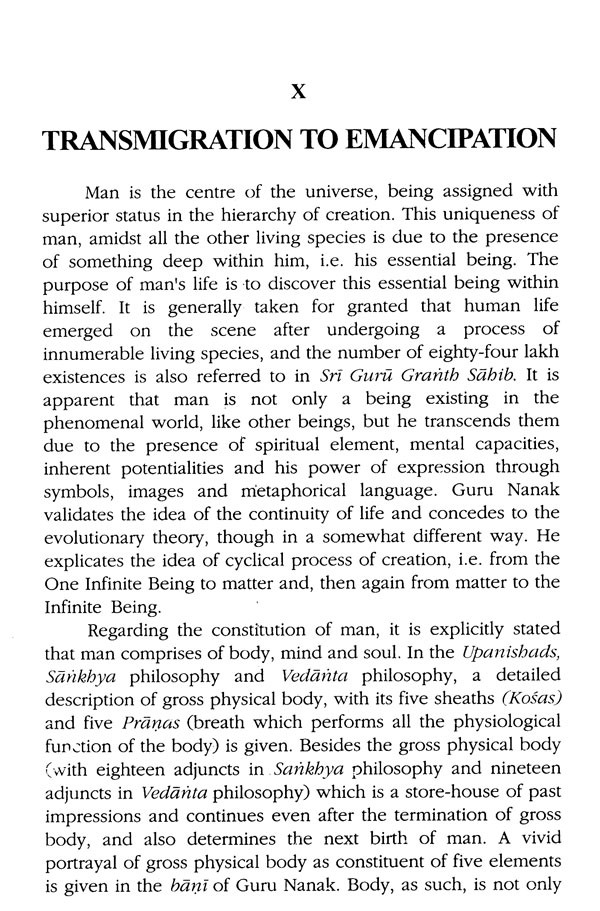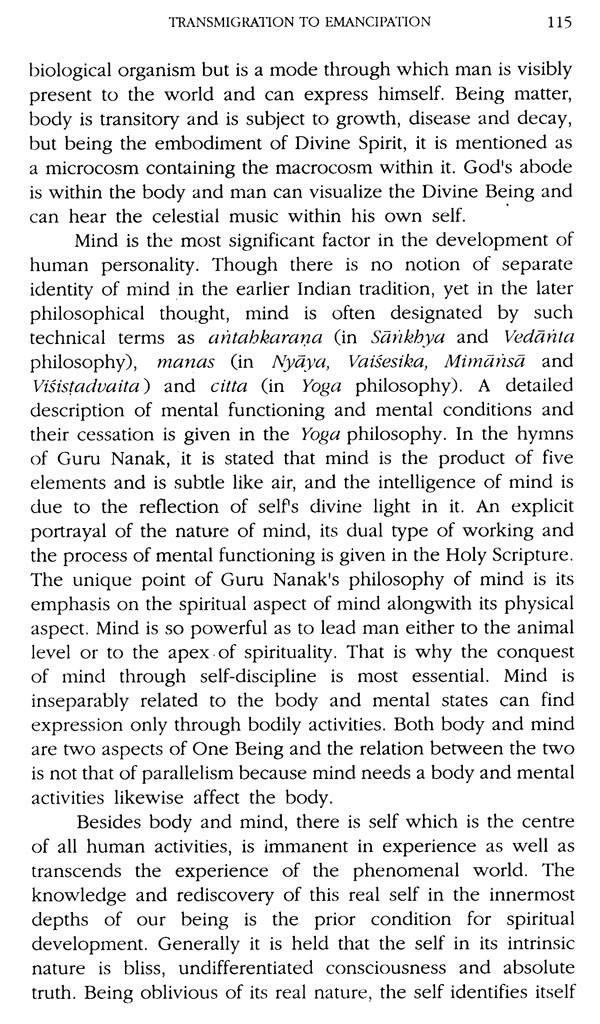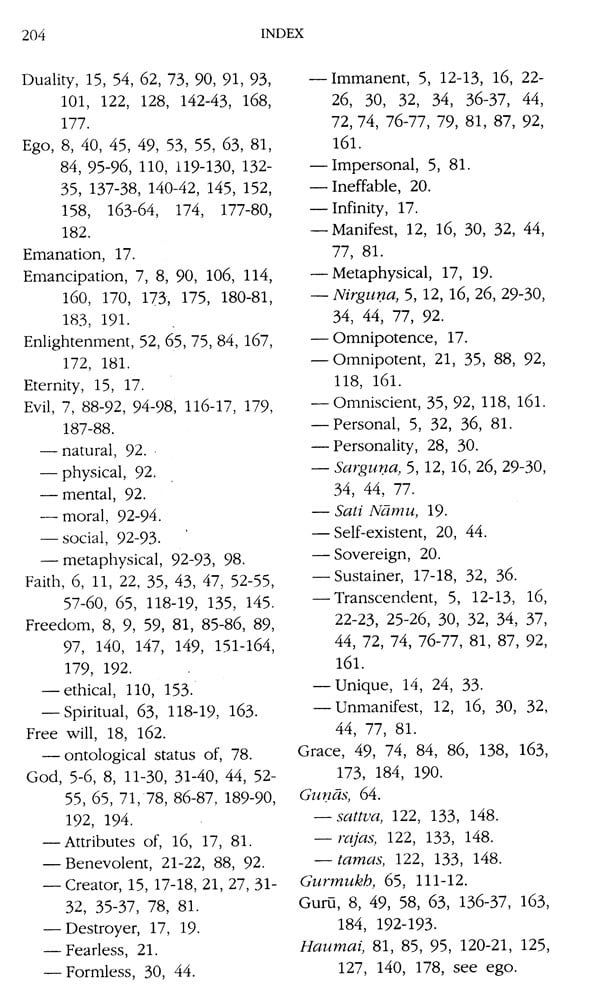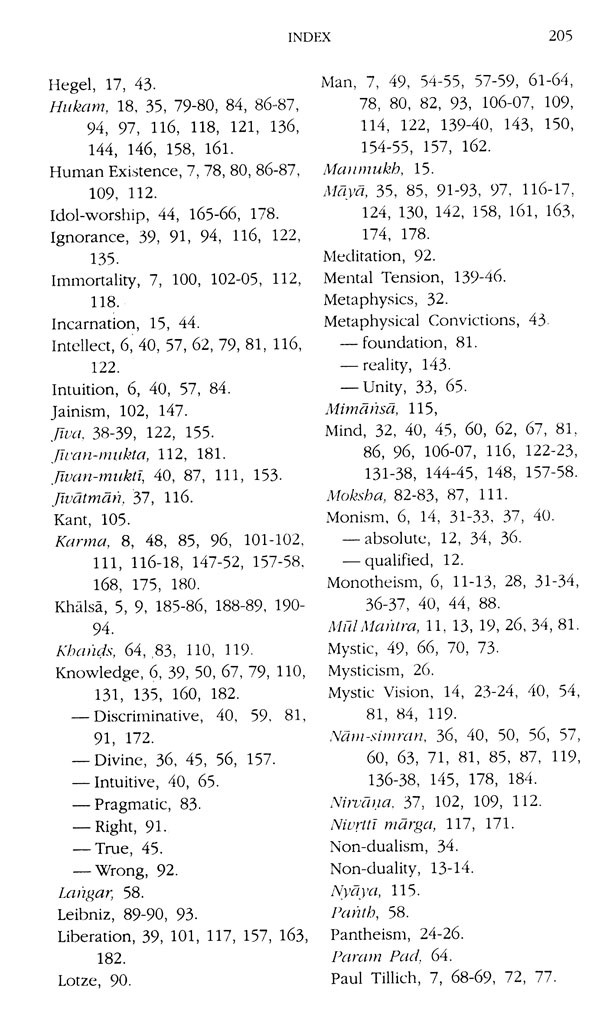
Sikh Metaphysics
Book Specification
| Item Code: | UAZ616 |
| Author: | Shashi Bala |
| Publisher: | Singh Brothers, Amritsar |
| Language: | English |
| Edition: | 1999 |
| ISBN: | 9788172052300 |
| Pages: | 208 |
| Cover: | HARDCOVER |
| Other Details | 9.00 X 6.00 inch |
| Weight | 340 gm |
Book Description
It presents not only conceptual analysis but also indicates guidelines for spiritual trans- formation. A metaphysical analysis of the problem of baumat and mental tension is done alongwith its remedy as is suggested in Sri Guru Granth Sahib. The problem of non-duality between man's actions and God as the only Doer is expatiated in dealing with the Divine Will and human freedom.
The Sikh metaphysics is not an abstract unity but it in- tegrates the spiritual and temporal aspects. The spiritual unity and social vision of the Gurus is explicit throughout the Holy Scripture and its culmination is evident in the creation of Khälsa, which is based on the ontological principle of One God.
A systematic exposition of the Sikh Religious Thought is found in Sri Guru Granth Sabib. The main emphasis, of most of the articles in this treatise, is on the holy compositions of Guru Nanak, who with his sagacious vision and profound mystic experience, has minutely visualised the subtle philosophical issues with great clarity, by offering solutions. Nevertheless, no conceptual difference is found in the succeeding Gurus, except for the emphasis on one or the other issue according to the changing times. The main stress was on the reconstruction of social order on the basis of the ontological principles of One God. The completion of the mission, started by Guru Nanak, reached its climax in the creation of Khälsa by Guru Gobind Singh.
The present volume comprises of nineteen articles, which are presented in the seminars and conferences and most of which got published in different journals from time to time. The first chapter enunciates the monotheistic concept of Sikhism, stressing on the Oneness of God with His Attributive aspects. God is portrayed both as Transcendent and Immanent; Nirguna and Sarguna; Impersonal and Personal. This type of depiction of God is not an abstract unity but it sanctifies the entire existence.
**Contents and Sample Pages**
